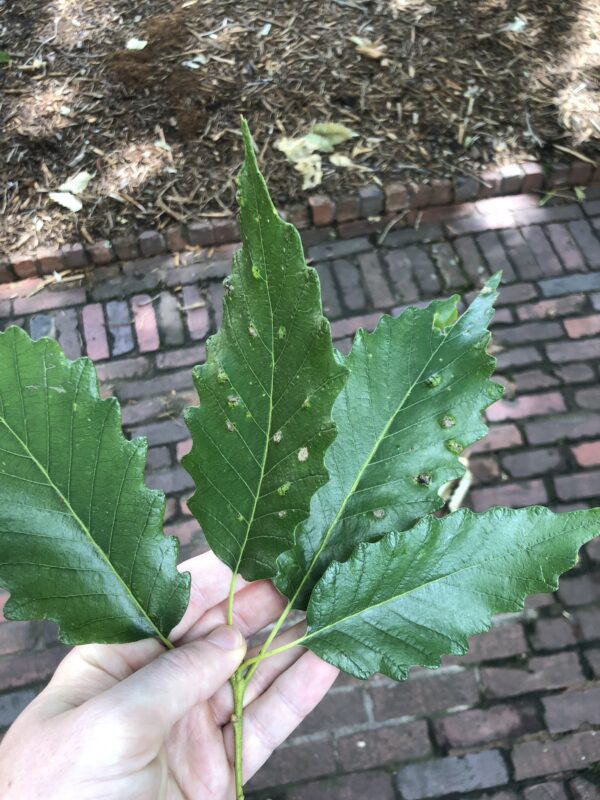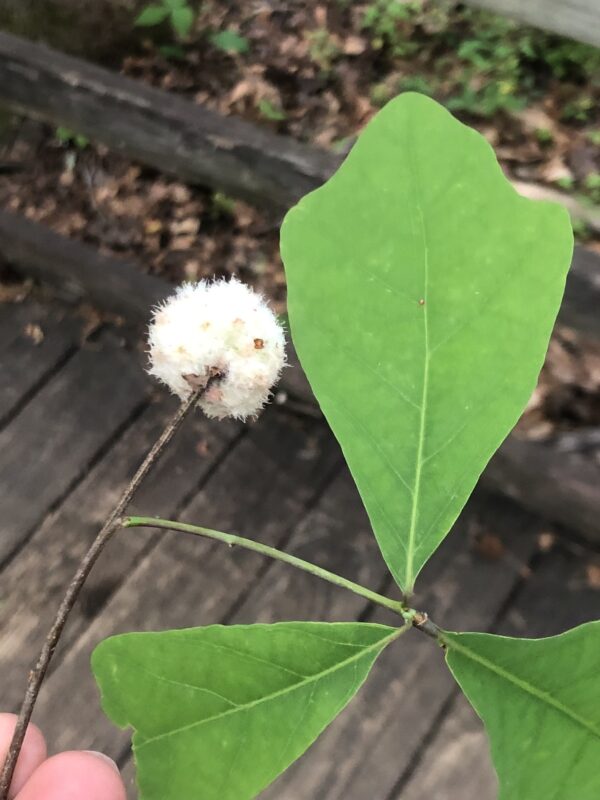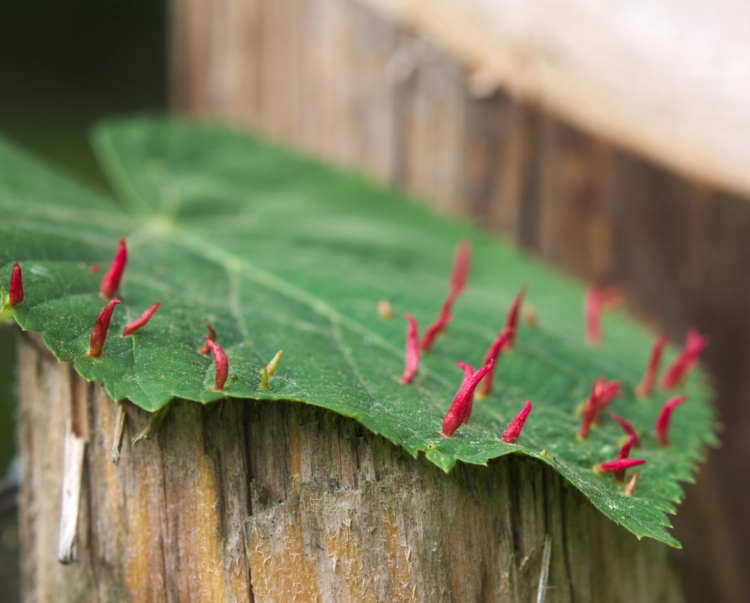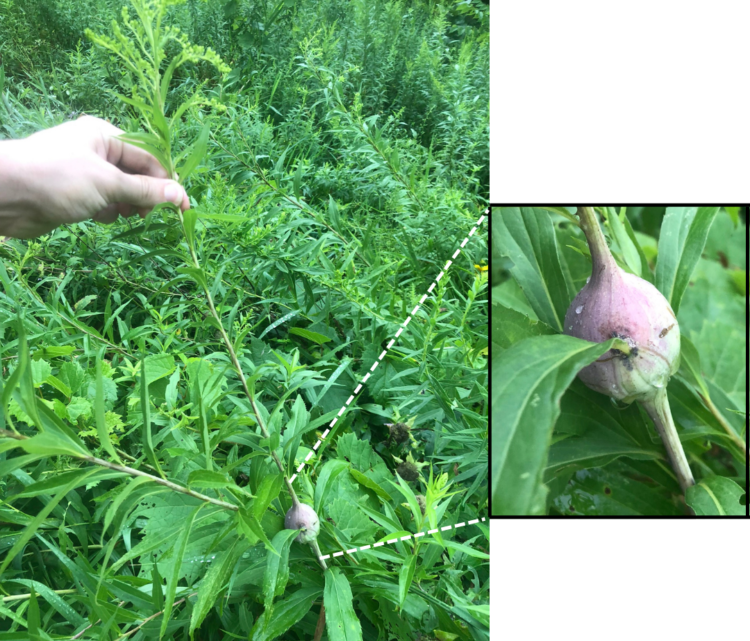In late Summer and Fall, you may find strange shapes on the stems of plants or tree leaves. These odd growths come in a variety of shapes, sizes, and sometimes even colors. Upon closer inspection, what you might think are fungi or insect pupa appear to be somehow part of the plant itself. You’re looking at galls!
These bizarre plant growths are a fascinating subject for nature lovers. Because they’re often overlooked, once you notice one, you’re bound to spot them all over the place. But what are galls? Where do they come from? In this Naturalist Answers post, I’ll show you all you need to know on the science of galls.

Renegade growth
Galls are confusing because they look so unusual for the plant they’re growing on, but they show no point of attachment. Apparently, they’re grown directly into the plant’s tissues. This is indeed true. Galls are a form of renegade cellular growth in plant tissues.
Naturalists and scientists also refer to galls as cecidia, and the science of galls is cecidology. In other words, they are actually formed by the plant itself. In this way, galls are kind of like benign tumors or warts. Your body makes them with its own growing cells, but it’s not because you want them.

Similarly, a plant or tree doesn’t grow galls on purpose. Instead, galls are the result of another organism hijacking the plant cells’ “machinery” for growing new tissue. Gall makers, as they are called, often secrete chemicals that mimic or stimulate plant growth hormones.
This makes the plant produce funky growths that it wasn’t designed to produce. Typically, they do this “hijacking” at a time when the plant is growing rapidly and cells are primed for it. Here are some examples of organisms that make galls:
- The aptly named Gall wasps (family Cynipidae)
- Adelgids
- Eriophyd mites
- Plant lice (Psyllidae)
- Sawflies (genera Phyllocolpa and Potania)
- Some aphids
- Beetles (Buprestids, weevils, some long-horned beetles)
- Micro-moths (Microlepidoptera)
- Certain viruses (which are arguably not organisms)
Why do bugs make galls?

Although a great variety of causes cause cecidia to form, insects are by far the biggest gallmakers. In the United States alone, over 1500 insect species cause these strange growths to form. But why do insects and other organisms cause galls in the first place? The answer is pretty neat.
Insects form make cecidia as sources of shelter and food for their eggs and larvae. By secreting chemicals into plant tissues, or letting their larvae do so, they force the plant to form a gall. In turn, that weird structure that the plant grows provides food and protection to the larva. Often, the larva will go through its entire development inside of the cecidia.
It will feed on the nutritious tissues the plant grew as the “filling” in the gall, and be safe from predators as it hides inside. In temperate climates, insect larvae can also spend the winter by staying inside and emerging in the spring.
If you find a gall, particularly in the Fall or Spring, be sure to inspect it carefully for exit holes. These are where the adult insect climbed out. However, the original larvae isn’t always the one to emerge.
Multiple tenants

Of course, like many other things in nature, having a private plant-room to grow up in is too good a deal to pass up. As a result, many other forms of mini-wildlife find take advantage of cecidia. Many species act as inquilines, which are organisms that live inside structures made by other ones.
These inquilines may be harmless roommates, living alongside the gall larvae. Alternatively, they may also eat all of the food in a gall, starving the original tenants, or eat the tenants themselves!
Do people use galls for anything?
As it turns out, many galls have had traditional uses for thousands of years. For example, Galla chinensis is a gall that grows on Chinese sumac (Rhus chinensis), made by an aphid named Schlechtendalia chinensis. Traditional medicine practitioners have used this gall to treat:
- Digestive problems
- Intestinal cancer
- Diabetes
- Sepsis
- Oral diseases
- Tissue inflammation
Scientific studies have actually confirmed that many of these effects work! Beyond that, chemicals from those galls may have other functions like protecting and restoring teeth and even fighting viruses.

People in the Mediterranean and Middle East used a variety of oak galls to create inks and dyes, and even for tanning leather.
In Australia, the large gall of a weird beetle called Cystococcus pomiformis in one particular tree is nicknamed “bush coconut”. Why, you ask? Well, because the inside of the gall tastes like coconut! Indigenous Australians have eaten this gall and the beetle inside as a highly nutrient-rich hiking lunch for millennia.
When and where can you find galls?

The best times to look for galls are:
- Late summer, when plants have had time to grow, and gall-makers have had time to infect them
- Winter, when most plants have lost their leaves, making galls more obvious
So many different species of plants have specially-adapted gall-making bugs that you can find them almost everywhere. However, some species are more prone to having galls than others. For example, native plant species are more likely to have galls, while introduced and invasive species‘ gall-makers probably aren’t in the neighborhood.
One of the best species to examine for galls are Oaks (Quercus sp.). These beautiful trees support more than half of the 1,500 known species of galls in North America! If you’d like to learn more about oaks and their galls, check out the Nature Guys podcast episode on oaks with Doug Tallamy.
Can galls hurt my trees?

Have you noticed galls on trees or shrubs in your back yard? Don’t worry! Galls often have a very minimal impact on plant health, especially in trees. In the unlikely event that they are numerous enough to cause some damage, it’s usually a one-off event. In other words, gall infestations are usually temporary, happening in one season. They’re unlikely to happen repeatedly, which would be more of a problem for a tree.
If anything, finding galls on your property is a good sign that you’re successfully Gardening for Wildlife!

Thanks for reading!
Have you come across any fantastic galls lately? Share with us in the comments! As always, I’m looking forward to getting to your questions in Naturalist Answers. You can send them in via the Contact form!

